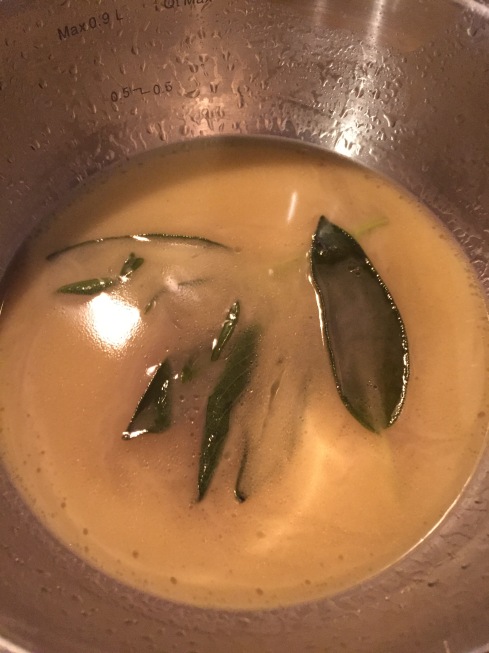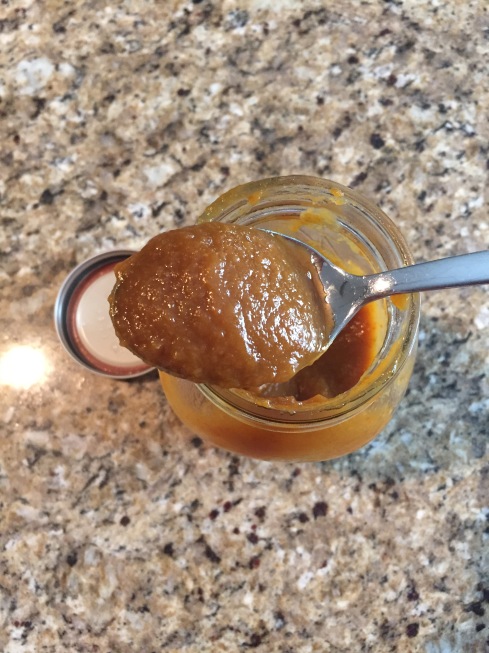It’s always fun this time of year to watch all the Thanksgiving shows and read the magazines and ogle at all the lovely decorations that publishers set up probably back in July while sweating their you-know-whats off. It definitely gives people the sense – the feeling – that something special is in the air. And if a show or a magazine actually inspires someone to recreate the look, or the dish, or the decoration, then they’ve done their job.
And each year it seems like there is some fad or idea that weaves its way through our nation. Some of those things have stuck around (surprisingly, I can’t believe people are still deep frying whole turkeys), and some thankfully fade (no MSG-injected birds, please).
This year, it seems the stuffed turkey breast roulade is the thing to make. I did this a couple of years ago for a Friendsgiving, and it was beautiful once cooked, sliced, and plated. If you are one of those people that can’t look into the cavity of a turkey without gagging, let alone stick your arm up in that thing, then the roulade is for you. Compared to a whole 16 pounder, the roulade takes much less time to cook, and with the right amount of butter, seasoning, and herbs, it still makes the house smell delicious.
Even with all that being said, it’s still not my favorite way to cook turkey.
My parents used to joke when I was little that I needed a divided cafeteria tray for my Thanksgiving meal. Sometimes, I would have three plates in front of me – my dinner plate, salad/relish plate, and a bread plate – all because I didn’t like my food to touch. Can you believe that? Me. With Thanksgiving food OCD. The gravy could not and would not touch anything but the mashed potatoes. And putting veggies even close to the turkey? Ludicrous. I would eat the cranberry sauce last (I still do that), and would always take more stuffing then I could finish.
When it comes to stuffing and roulading a turkey breast, it’s fun and all, but too much Thanksgiving food touching.
My secret it out.
To balance my vulnerability here, I’ll provide a little bit of fairness to this strange squabble (and mind you, this is a blog, so there really isn’t an argument unless you call this arguing with myself, in which case there are some other issues at hand besides food touching). People love white meat, especially turkey white meat. Now, these people may change their mind once they try one of those big ol’ turkey legs from a cart at Disneyland, but I digress. The thing with turkey breast is that they are bland, especially without a bone. Thus, all the fuss around the stuffing, and the butter, herbs and spices – sometimes possibly a brine – that are needed to make a Thanksgiving turkey a tasty treat.
So for this part of the Turkey Day Trials, I thought about what could keep a turkey breast tasty, after the cooking, without stuffing it. Whether you are a bone-in or boneless fan, stuffed or plain Jane, something just had to work for all stages and styles of turkey breast to make it the easiest to cook yet tastiest to eat. Then, the Sage Butter Broth was born.
I’ve used the trick of pouring a bit of chicken broth over cooked turkey to help it keep moist. But what about all of the flavor that everyone loves on the outside (or inside, if stuffed) of the bird? With that in mind, I made a butter broth. Yes, you read that correctly. Butter. Broth. And you heard it here first, folks.
I made the Sage Butter Broth by whisking 1 cup of low sodium chicken broth, a good 1/2 tsp of sea salt, a large sprig of sage and ½ a stick of unsalted butter together over medium-low heat in a sauce pan. After the mixture had emulsified into one and was fragrant with sage, I poured it over the cooked (and rested) sliced turkey breast.
I had cooked my turkey breast (I always use bone-in) simply with some salt, white pepper and butter, but it was that Sage Butter Broth alone that made the turkey so flavorful and juicy. I even kept it a secret from my family – I mean, taste-testers. It was my dad – I mean, the tall man at the table that said it first, “This turkey is so juicy.”
So now, it’s decided that the Sage Butter Broth will be on the ever-so-most-important back burner this Thanksgiving. Making all the meat herby and buttery and juicy and delicious!
Enjoy!
*****
Oh, you all are so, so lucky. The hubs cooks again! Maybe my Turkey Day Trials have started to rub off on people because Rob has created another fantastic addition to our Thanksgiving table: Grilled Acorn Squash (I asked him if he would want to write a blurb, but he politely declined, so I’ll do my best to recreate his masterpiece). For all you grillers out there, he halved an acorn squash then seasoned it with olive oil and s&p. He cooked it flesh-side down first (about 10 minutes), then flipped it, all on indirect heat (he says that detail is important). After about 20 more minutes, the squash was tender and ready for a make-shift glaze of butter, brown sugar, bourbon, maple syrup, and lemon juice. After glazing the flesh of the squash, he left it to caramelize for about 5 more minutes, then cut it into fourths and plated it. These grilled squash are legit. They are not-your-standard-pilgrim-yeah-Squanto-only-wishes-he-thought-of-this DELICIOUS. Enjoy!








